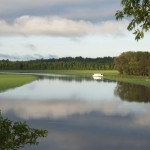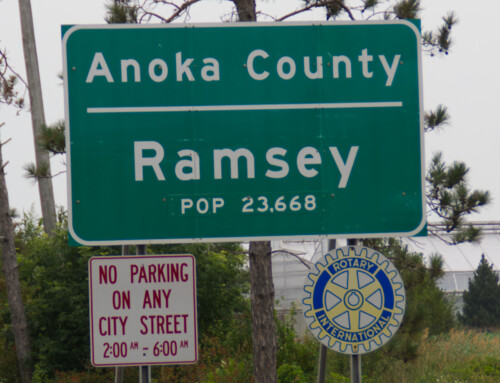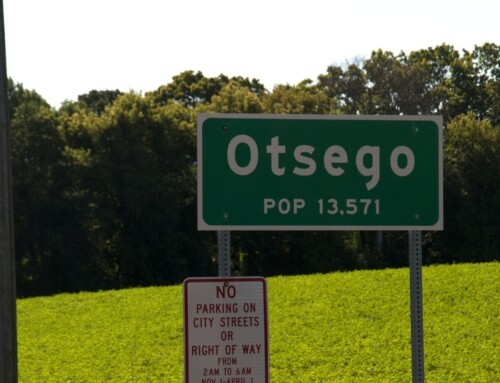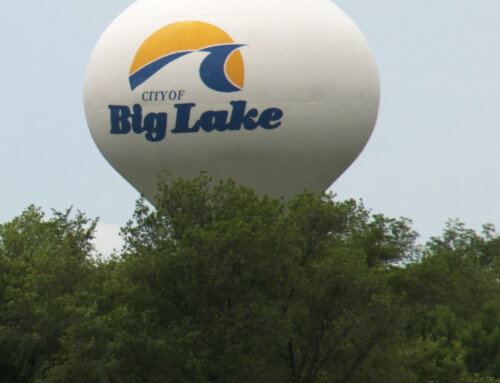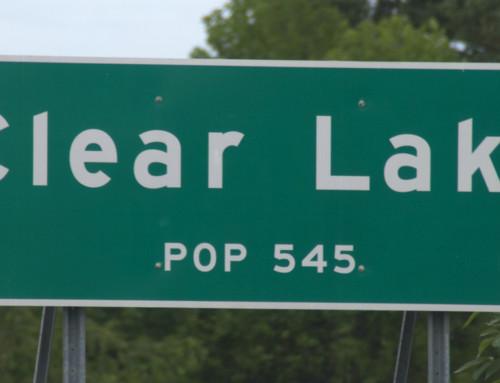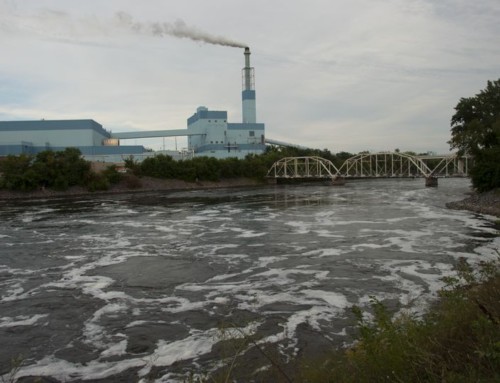Introduction
Cohasset is a place with a lot more land than people, but some of the places within its city limits offer great access to the Mississippi River.
Visitor Information
Visitors can load up on brochures and information at Visit Grand Rapids (10 NW 5th St.; 218.326.9607), which is located on the second floor of the historic old schoolhouse.
History
The city of Cohasset spreads out along Jay Gould Lake (named for a fur trader who lived in the area in the 1870s), but it also abuts Pokegama Lake and the Mississippi River. The city is named after a place in Massachusetts, whose name comes from an eastern American Indian language meaning something like “fishing promontory” or “place of pines.” The Ojibwe called the area Ushigunikan (the place of bass).
The Duluth and Winnipeg Railroad extended from Grand Rapids to Cohasset in 1892; the trip took 15 minutes and cost 30 cents. The village of Cohasset was laid out in 1893 and incorporated in 1901. When the village council held its first session in 1902, one of their first actions was to force saloons to close for a few hours on Sunday nights instead of the usual practice of staying open 24/7. The council also banned the abuse of “dumb animals”; presumably this was meant to protect the village council.
Around the time that Cohasset became an official place, it was largely a big lumber camp full of saloons that catered to the lumberjacks. A peak at the 1900 census would show folks who listed occupations like teamster, blacksmith, logger, woodsman, farm laborer, prostitute, log driver, or shingle sawyer.
The village’s location on the Mississippi River was a big plus. The Itasca Rail Road ran 18 miles from Cohasset into the woods to collect trees, dropping them into the Mississippi River where teams of men would drive them downriver to mills. Logs were often piled so thick on the river at Cohasset that you could walk across them without getting wet. When the railroad couldn’t reach agreement with a lumber company to buy more land along the Mississippi River, though, the railroad shifted its operations to Deer River, and Cohasset saw a predictable decline in its economy.
In those early years, there weren’t enough local farmers, so food had to be brought in by railroad. Much of the forested land was eventually turned into farms but only after stumps were cleared, a laborious task that could be sped up with a little dynamite. Potatoes were the most common crop at first, but many farmers later converted to dairy.
Medical treatment on the frontier was pretty basic. When Dr. Hursh was called to treat a bachelor farmer who had a foot infection with gangrene setting in, the good doctor collected maggots from the farm and put them around the wound, then wrapped it tight. The next day, the bandage was removed and all the dead flesh had been eaten. Problem solved, the farmer went back to work a short time later.
This part of the state has a long history as a vacation destination. Summer resorts began opening as early as 1909 not far from Cohasset. A few old-time resorts persist but most have been replaced by privately-owned summer homes.
Although the center of iron ore mining was further northeast, the Western Mining Company operated for a while near Cohasset. From 1955 to 1961, the company excavated some three million tons of iron ore from Tioga Mine Number Two.
When Edna Comstock was elected mayor in 1951, she became one of the first women in the state to serve in that office. She was also a pretty tough woman; if word got around that a fight had broken out, say, at the liquor store, she’d grab a gun and head down there to break it up.
In 1975, Cohasset disincorporated but in 1990 the whole township incorporated as a city, first taking the township name (City of Bass Brook) before re-adopting the name Cohasset in 1994. Tourism remains a big business in the area but some logging continues, as well.
Exploring the Area
The Pokegama Recreation Area (34385 US Highway 2; 218.326.6128) is right on the Mississippi River and is a popular place to picnic and fish.
Bass Brook Wildlife Management Area (off County Road 63 at Lake Street) has several hiking and cross-country ski trails through woods and swamp that sometimes parallel the Mississippi River. The easiest way to reach it is by walking across the dam at Pokegama Recreation Area.
The former Tioga Mine has filled with water (51 acres up to 225 feet deep) and is now a popular recreation area, complete with a swimming beach (Tioga Beach Rd.; 218.328.6225), and is a popular place to fish and scuba dive.
**Cohasset and nearby areas are covered in Road Tripping Along the Great River Road, Vol. 1. Click the link above for more. Disclosure: This website may be compensated for linking to other sites or for sales of products we link to.
Where to Eat and Drink
Florio’s Grill and Tavern (105 NW Main St.; 218.999.7077) in Cohasset serves a mostly standard selection of sandwiches but you can also get a gyro; they also have a nice selection of steak and seafood entrées.
Where to Sleep
Camping
Pokegama Recreation Area (34385 US Highway 2; 218.326.6128) has 19 attractive sites with water and electric and two tent sites off by themselves on the other side of the park; most sites have a good view of the Mississippi River.
Sugar Bay Campground and Resort in Cohasset (21812 Moose Point Rd.; 218.326.8493) is in a scenic location on Pokegama Lake. They rent 10 sites with full hookups and cater to seniors (60 years old and up).
Where to Go Next
Next stop downriver: Grand Rapids
Next stop upriver: The Land of Lakes: Bemidji to Grand Rapids
Community-supported writing
If you like the content at the Mississippi Valley Traveler, please consider showing your support by making a one-time contribution or by subscribing through Patreon. Book sales don’t fully cover my costs, and I don’t have deep corporate pockets bankrolling my work. I’m a freelance writer bringing you stories about life along the Mississippi River. I need your help to keep this going. Every dollar you contribute makes it possible for me to continue sharing stories about America’s Greatest River!
©Dean Klinkenberg, 2022
